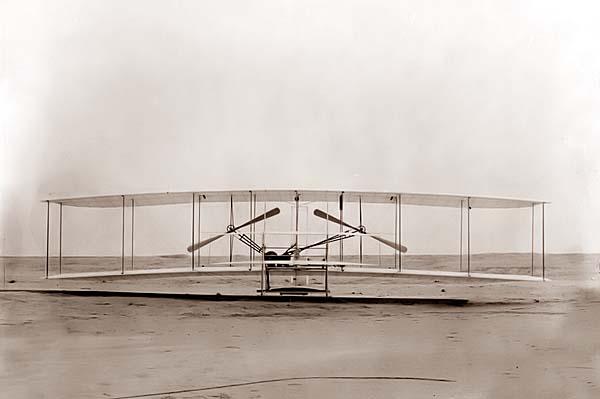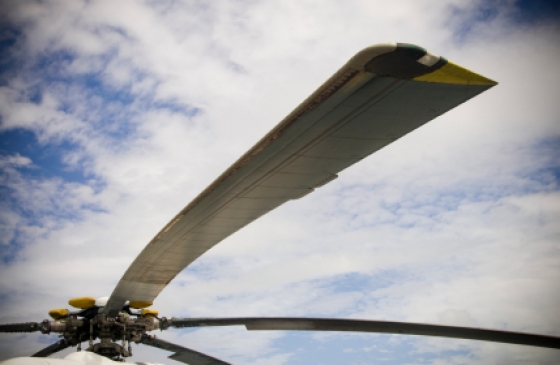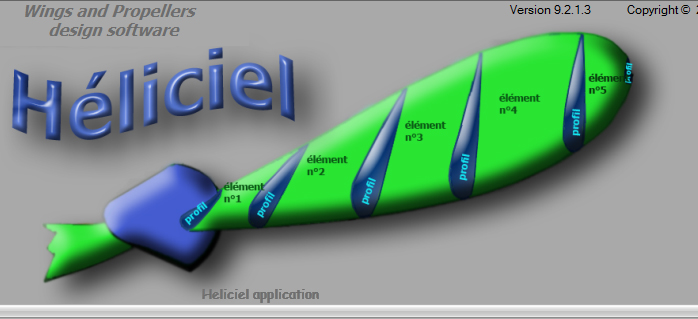see also: evolution propeller design methods
Modeling a wing mast sail in heliciel Introducing the mecaflux software suite: Wings or foils modeling in helicielthe propeller is a rotating blade, consider the propeller as a rotating wing:
Whether intended to capture the energy, or to propel a fluid (or vehicle), the construction of a propeller requires a concrete approach that combines the prediction performance and the geometric definition of the blade enabling edit the plan or 3D model.
The evolution of propeller computational methods and propellers design shows that the methods are diverse but the one that allowed men to take off, predicted performance from a profile geometry:The Wright brothers had made a series of tests of model profiles in the wind tunnel, which allowed them to calculate and extrapolate the performance of their wings. They knew the thrust to produce to compensate for the drag of their wings, thrust produced by two propellers. Screew propeller efficiency was especially important because they did not have the power of today engines. The autonomous flight was inaccessible because of the inability to generate thrust, with an engine of reasonable weight. Find the best ratio engine power / weight possible was important, but to waste this power with a poor performance propeller was excluded!

1904: An engine, wings, propellers ... and a method!!The propeller can be seen as a rotating wing, because, as a wing, it uses the lift of the blades to generate thrust. The idea of using their method of predicting shape and wing performance, and to transpose the propeller was natural?, genius? ... In any case, the wright brothers have decided to consider the propeller as a rotating wing, they extrapolated, and they took off. Modern methods of calculating propeller had been born:
To apply the performance profiles of the wing at the blade, it must still take into account certain differences. Depending on the distance from the axis to the point observed on the blade, the apparent speed perceived at the point observed varies. It is therefore necessary to calculate the propeller performance, taking into account these velocity variationsA division of the blade slices, ranging from foot to blade tip, allows us to study the blade elements, to relative velocities at each position over the radius. The experience tells us that a decoupage of the blade, upper has 10 items, do not bring us a lot of gain accuracy, and greatly increases the computation time ... The lift and drag of each element is calculated based on the relative speeds of the elements. The projection of drag and lift force, torque and thrust is then used to determine the overall performance of the propeller. This basic method of the blade element is coupled to the other methods to take into account the induced velocities . The blade element method combined with the vortex theory, uses database performance profiles to solve the system of equations which will give us the best performance for the propeller.



 Global site map
Global site map Mecaflux
Mecaflux Tutorials Mecaflux Pro3D
Tutorials Mecaflux Pro3D Tutorials Heliciel
Tutorials Heliciel Mecaflux Store
Mecaflux Store Compare software functions
Compare software functions Quotes, Orders, Payment Methods
Quotes, Orders, Payment Methods project technical studies
project technical studies